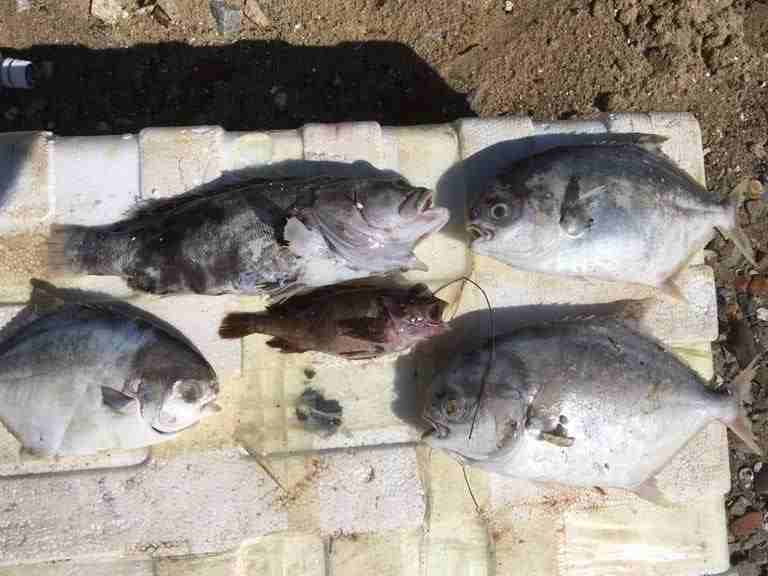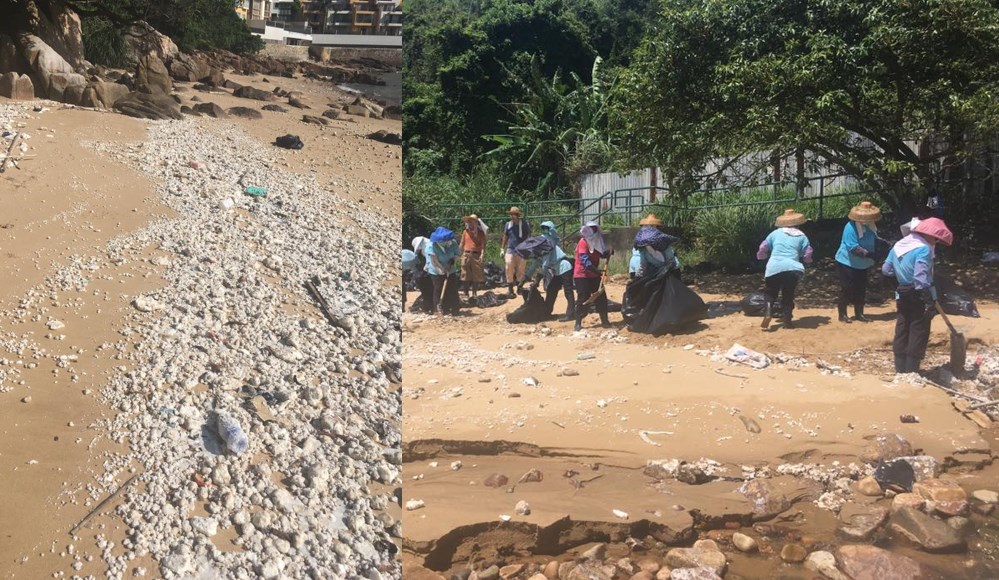Hong Kong closed an eleventh government-gazetted beach on Monday, as a palm oil spill continued to affect beaches across the territory.
At around 11.30am, the red flag was hoisted at St. Stephen’s Beach in Southern District to warn beach-goers not to enter the water. The spill occurred after two cargo vessels collided last Thursday near the Pearl River estuary in southern China.

On Hong Kong Island’s Southern District, Repulse Bay, Middle Bay, South Bay and Chung Hom Kok beach were closed on Sunday. Similar slicks were reported at Hung Shing Yeh, Lo So Shing, Pui O, Upper Cheung Sha, Lower Cheung Sha and Tong Fuk beach on Lamma and Lantau Island.
Palm oil is edible and not hazardous in small quantities. However, environmental groups have said that the scale of the spill could have “disastrous” ecological consequences.
‘Snow-like’ spills
The Very Hot Weather warning was issued on Saturday morning, and remained in effect through Monday. Lamma resident and conservationist Robert Lockyer told HKFP that the oil had hydrolysed on the surface of the sea owing to the hot weather.

“Just looking at Yung Shue Wan: if this was winter time, you would say that it had snowed. The beach is white. All the sand and all the rocks are covered in white balls of oil. The oil that’s out there on the sea has melted, forming a slick on the ocean.”
“The oil floating on top of the water is reducing [the] oxygen absorption of fish, meaning that more are dying than usual,” said Lockyer. “Another concern is about the birds: herons and other water birds that dive into the water to catch fish. If they get stuck in the oil, or it coats their wings, these birds may end up drowning.”
Lockyer added that government workers were struggling to clear up the mess. He has invited citizens to meet at Lamma’s Yung Shue Wan bike park at 3pm on Tuesday to assist.

Tracey Read, founder and chief executive officer of Plastic Free Seas, told HKFP that reports of palm oil spills in the past have shown that the substance is a magnet for bacteria: “If you have concentrated balls of oil on the beach, and a dog or a child ate it, there could be a huge risk.”
Read said that while the government has a protocol for cleaning up beaches, the priority should now be the containment of the palm oil while it is still on the water: “The government should be implementing its oil spill containment policy with immediacy, because once it has washed up on the beaches, it will be very difficult to clean.”
Read compared the palm oil spill to the plastic pellet spill that happened in 2012, saying that the government’s lack of resources meant that environmental organisations and members of the public would have to play a part in cleaning up local beaches.
See more: In Pictures: 10 Hong Kong beaches closed after cargo ship collision causes palm oil spill

According to Lockyer, contractors from the Food and Hygiene Department have already begun to clear up some of the government-patrolled beaches on Lamma Island.
NGOs such as Eco Marine, Green Power, and Eco Resource Center have issued emergency appeals for citizens to participate in beach clean-ups in the Lamma Island community.
